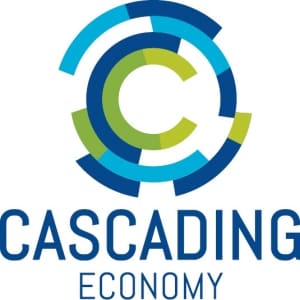How can Energy Management be Described in a Sustainable Context?
In sustainability consulting, the term energy management (EM) not only covers the management and planning of the energy sector of a company, but also includes climate-related goals and energy efficiency.
EM includes the involvement of processes and systems, but human behaviour also plays a role. This results in different motives of energy management. The combination of all factors to enable minimum energy use is the basic idea.
The most important advantages of energy management are summarized below:
- Cost Reduction through Successful Energy Management:
Efficient EM reduces the costs for the respective company. This is an advantage because companies depend on energy supply and are therefore also dependent on energy prices.
A more efficient use of energy therefore also gives a competitive advantage over other companies. - Sustainable Use of Energy as a Resource:
The more efficient EM, the more thoughtful the extension of the building and the greater the use of intelligent systems, the more sustainable the use of energy. At a time when energy procurement is facing new challenges, the resource energy is given special consideration in sustainability consulting.
In the best case, energy should not only consist of renewable raw materials, but should also be used as efficiently as possible.
Thus, EM in sustainability consulting contributes to a continuous improvement of energy use.
Energy-Management-Systems to Enable Sustainable EM:
The term energy-management-systems means that the technical side of EM is considered. Processes are optimised and so-called “smart” meters and electricity grids are used to ensure that the grid is used as evenly as possible.
In EM-Systems, other factors besides the technical component are also important. These include, for example, the EU directive on the overall energy efficiency of buildings.
Basically, EM-Systems are an important tool for meeting political requirements, monitoring, measuring and improving energy use in a company or private household.
The international energy management standard ISO 50001 provides a framework for successful EM-Systems. The requirements contained in the standard range from energy policy, energy planning, energy targets to documentation, monitoring and auditing.
How the Implementation of EM Looks Like?
In more concrete terms, energy consumption will be lowered and the use of external raw materials reduced. As a result, the energy sector is increasingly self-sufficient.
On the one hand, heating technology and thermal insulation are being looked at more closely, and on the other hand the EM-Systems mentioned above are being used.
With the help of an action plan, an EM programme is set up to guide the company through the phases from the beginning. Among other things, it will show how an improvement in energy efficiency is to be carried out, what resources are available, the prioritisation of measures, the time frame for carrying out the measures and who is responsible for them.
All these tools ensure sustainable EM, which helps to use energy in a resource-saving way. This is in line with the circular economy, the Cascading Economy, which provides a contribution to sustainable management.
Sources for energy management in sustainability consulting:
https://www.energiemanagement-und-energieeffizienz.de/informationen/energiemanagement/
https://wirtschaftslexikon.gabler.de/definition/energiemanagement-53997
https://wirtschaftslexikon.gabler.de/definition/energiemanagementsystem-53996
https://www.energiemanagement-und-energieeffizienz.de/energie-lexikon/energiemanagementsystem-enms/
https://www.energiemanagement-und-energieeffizienz.de/energie-lexikon/aktionsplan/
https://www.energiemanagement-und-energieeffizienz.de/energie-lexikon/din-en-iso-500012011/



